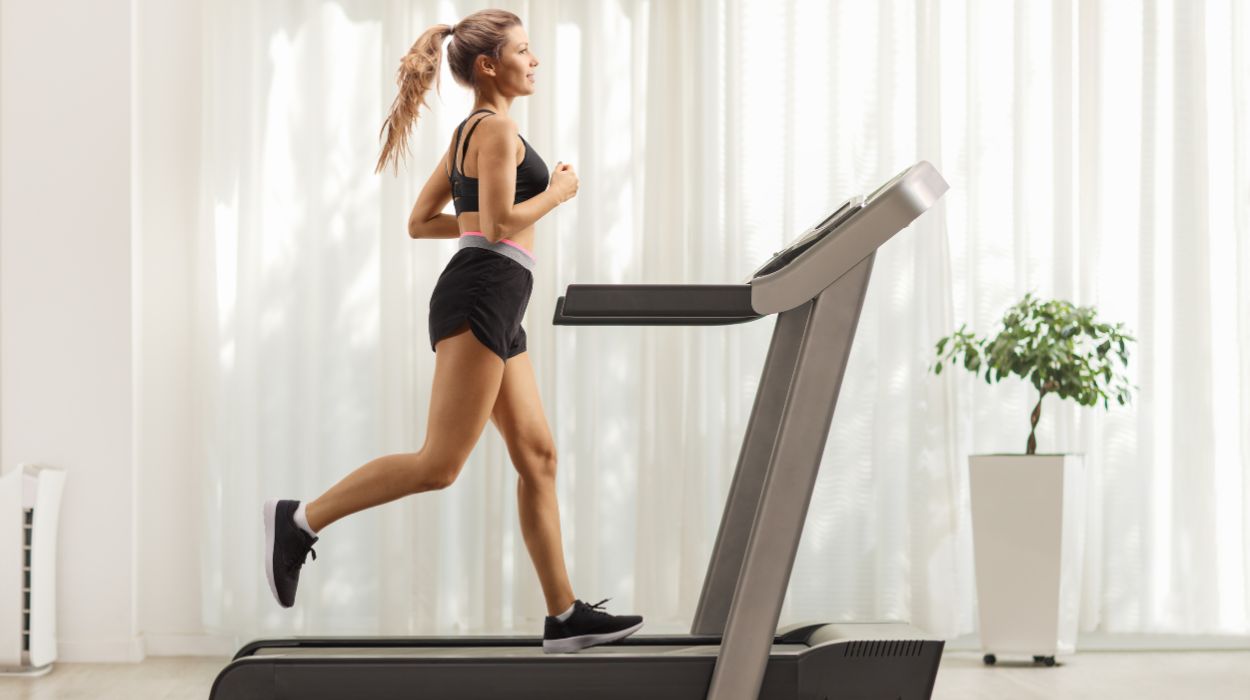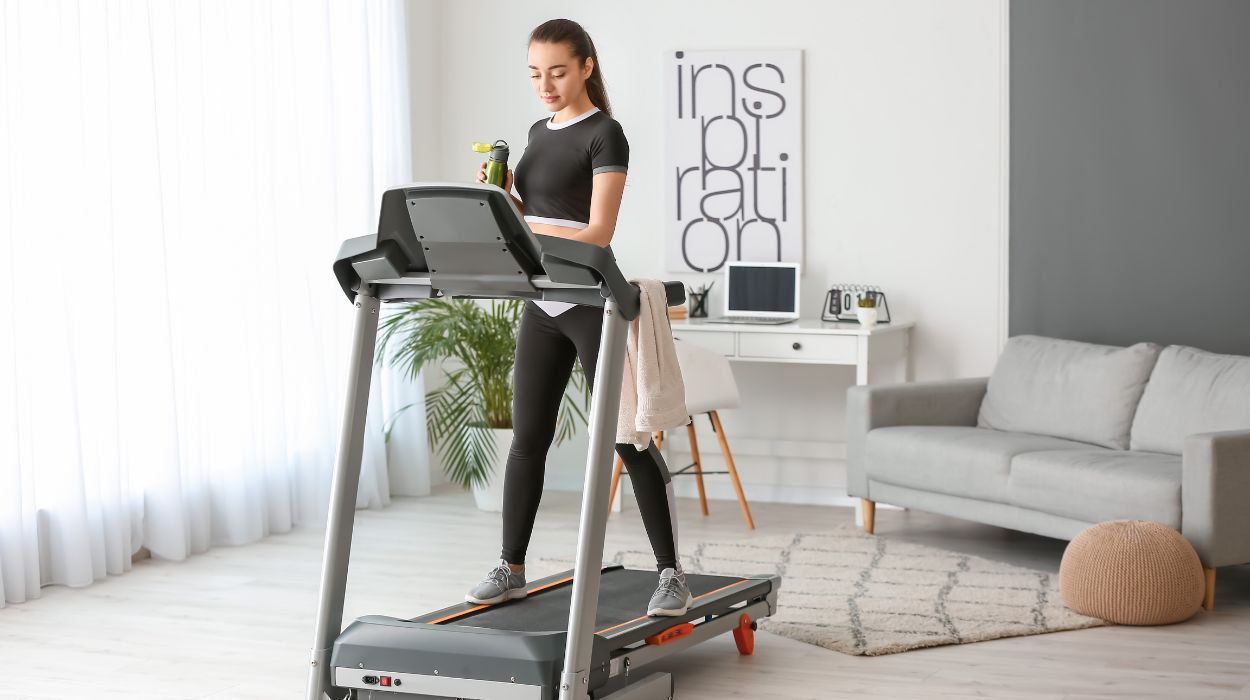Are you looking to become more physically active and aren’t sure where to start? Maybe you want to add some variety to your workout routine. Treadmills can provide the answer.
They are adaptable and accessible. You can usually find one open at the gym, and if you’d rather work out at home, there are plenty of great options.
Programs can be set to target warm-ups, high-intensity interval training, or more steady aerobic exercises. Variety keeps things fresh, helping you stay motivated. Watching your favorite show while you work out doesn’t hurt either!
So, what is the best treadmill workout for weight loss?
Best Treadmill Workout For Weight Loss
Treadmill workouts work best when tailored to your fitness level and preferences. Learning different exercises can keep your routine from getting stale. Some helpful treadmill workouts for weight loss include:
- High-intensity interval training.
- Run-walk-jog.
- Sprint intervals.
- Cardiovascular Training.
- Steady-state cardio.
- Traditional 5k.
- Incline Variations.
- 12-3-30 treadmill workout.
- Up the hill, down the hill.
Treadmill Workout For Weight Loss
You might think of treadmill workouts for weight loss and imagine someone sprinting to the max. Except, an effective treadmill workout doesn’t have to be high-intensity. You can burn calories and support body fat loss with moderate or even low-intensity workouts.
If you’re unsure where to begin or which exercises are safest, try meeting with a certified personal trainer for a personalized plan. Whether you’re just starting or have an established workout routine and want to avoid plateaus, learning alternative approaches can help you keep improving.
Workout plans can vary, including walking or running. Regardless of which treadmill workout you choose, there are great options to help you burn fat or get the flat stomach and overall weight loss you’ve been looking for.
High-Intensity Interval Training

As the name suggests, a high-intensity interval training or HIIT workout involves moderate or intense exercise intervals broken up by periods of relative rest. This approach is sometimes used as an alternative to aerobic or cardio training because it helps you get your heart rate up.
Your target heart rate is important not only for burning calories but also for staying safe. You can estimate your maximum heart rate by subtracting your age from 220. When you perform high-intensity intervals, a good target heart rate is 77%-93% of your maximum heart rate.[1]
Consult your doctor if you are unsure whether a particular heart rate will be safe to target.
HIIT treadmill workouts provide a great way to burn calories, helping with fat burning and losing weight. HIIT workouts can also benefit overall wellness as they are associated with a lower risk of cardiovascular disease.[2]
There are plenty of ways to add high-intensity exercise intervals to your treadmill routine. Let’s look more closely at some popular options.
Run-Walk-Jog
This approach uses fairly short intervals, so you’re constantly switching speeds. This helps you stay on your toes and provides a nice change of pace to keep you motivated. It can be a challenging workout for some because of the running pace.
The general approach is:
- On a flat incline, warm up at a walking pace of about two mph for about five minutes.
- Increase the speed to a running pace of about eight to nine mph for 30 to 45 seconds.
- Decrease the speed to walking at a more brisk pace of about three mph for 30 to 45 seconds.
- Increase the speed to a jogging pace of about six mph for 30 to 45 seconds.
- Repeat these intervals for a total of about 20 minutes.
- Use a walking pace of about two mph to cool down.
The speeds can be altered based on your comfort and fitness levels. As you run, it should feel like you’re giving it everything you’ve got.
Sprint Intervals
Like the run-walk-jog method, sprint intervals allow short bursts of intense exercise broken up by active rest periods. This simply alternates directly between running and walking and can be performed by:
- Warming up on a flat incline at about two mph for five minutes.
- Increasing the speed to about nine mph and running for 30 to 45 seconds.
- Decreasing the speed to about three mph for a brisk walk lasting 30 to 60 seconds.
- Repeating these intervals about five to eight times.
- Cooling down at a pace of about two mph for several minutes.
Again, these speeds can be adjusted based on your comfort level.
Cardiovascular Training
If performing an all-out sprint on a treadmill doesn’t sound fun, or you’re looking for ways to add variety, a moderate pace still gives you a great fat-burning workout. Steady-state cardio, or a more consistent pace to keep your heart rate in your target range, may be easier than intervals and will still provide a great workout.
By incorporating consistent cardio exercise into your routine, you can burn fat and calories to achieve your weight loss goals. Aerobic exercise is another great way to reach a caloric deficit and promote fat loss,[3] while combining cardio with weight training is a good way to increase muscle definition.
Cardiovascular training is also associated with overall health benefits, like a lower risk of cardiovascular disease.[4] Continue below for some of the best ways to start incorporating cardio training.
Steady State Cardio
This may be one of the easiest ways to start a moderate-intensity treadmill routine. It’s adaptable to your fitness level so that you can benefit regardless of your current fitness level.
Depending on your current weight, jogging for 30 minutes can help you burn 200 to 300 calories[5] — an amazing way to keep up with your weight loss goals.
Set a jogging pace that you can consistently maintain for 20 to 30 minutes. Make sure to warm up before beginning by walking at two mph for several minutes.
Keep an eye on your heart rate. Your target for a steady moderate-intensity workout will be between 64%-76% of your max heart rate,[1] defined by subtracting your age from 220. As you train, reaching these levels with more precision can become easier.
Traditional 5k
Rather than target a specific time, you can target a specific distance. To run a 5k, warm up for a few minutes at a walking pace, reset your distance, and increase the speed to a jogging pace you can maintain until you’ve achieved the desired distance.
Over time, try increasing your speed as your conditioning improves and track your finish times. When you’re getting started, setting a brisk walking pace is okay.
Incline Variations

Changing the elevation of your treadmill can introduce an element of difficulty that helps you burn more calories. Even while walking, you burn more calories[5] when walking uphill. Walking on an incline also helps you focus more on different leg muscles by emphasizing your calves.[6]
12-3-30 Treadmill Workout
The 12-3-30 approach is gaining a lot of attention on social media as a weight loss technique. In the initial video, an influencer claimed they lost 30 pounds without changing their diet while using this workout.
While the 12-3-30 approach can certainly help you burn calories, it’s important to have realistic expectations. Whether or not you lose weight depends on whether you are burning more calories than you are eating.
For example, the influencer didn’t even provide the details of their diet plan. Plus, the amount of time it took them to lose 30 pounds wasn’t specified.
Social media influencers often focus on rapid weight loss—it’s appealing, after all. The key is to maintain balance during your weight loss efforts. There is a potential for some dangerous misinformation that can promote things like nutritional deficiencies, eating disorders, and unrealistic expectations.
Developing healthy habits and staying consistent over time is ultimately more helpful than chasing the quick fix.
Using an incline[5] does help you burn calories, so the workout itself can be beneficial when you add it to a healthy diet. To try the 12-3-30 workout, warm up first, set your incline to 12% and your speed to 3 mph, and keep this steady pace for 30 minutes.
Up The Hill, Down The Hill
Imagine you are walking or jogging, and you start up a long hill that gets steeper as you approach the top. Simulating hills on the treadmill can provide a good challenge. You can try to maintain a jogging pace as the incline increases, but it’s okay if you need to walk at the higher incline levels.
This exercise is performed by warming up on a flat incline and then speeding up to a jogging pace. As each minute passes, you increase the incline level by 1% until it reaches its maximum. After one minute at the highest level, reduce the incline by 2% every minute until you reach a flat incline.
Benefits Of Treadmill Workout
Establishing or staying consistent with your treadmill routine is a great way to increase your heart rate and burn calories. Some of the benefits include:
- A higher likelihood of maintaining a caloric deficit leading to fat burning and weight loss.[7]
- A lower risk of developing cardiovascular disease.[4]
- Improved mental health.[8]
How Much Should I Workout On A Treadmill To Lose Weight?
Cardio training can be performed daily if you’d like. Workouts can also be broken up over the week as your schedule allows — the key to weight loss is to burn more calories than you eat. Staying consistent with your routine helps you stay conditioned, and of course, the more often you exercise, the more calories you burn.
Even if you add a resistance training routine to help you get ripped, burning more calories than you eat is what helps you lose weight. Consistency is key.
Is A Treadmill Good For Weight Loss?
Treadmill routines are a great opportunity to burn calories and create a caloric deficit for weight loss. Regardless of whether you add diet pills or fat burners to your treadmill routine, it’s crucial to maintain a healthy, balanced diet.
Consider tracking your calories. Jogging on the treadmill for 30 minutes can burn 200 to 300 calories. If you’re doing this regularly, it will add up, but you also need to make sure the calories from your diet aren’t going to sabotage your efforts!
Conclusion
If you want to lose weight, jumping on the treadmill can help you burn calories and promote a caloric deficit. Treadmills are a great way for beginners to get moving and continue to benefit even the most seasoned athletes.
Frequently Asked Questions
It depends on your current weight. Walking on an incline at about three miles per hour for 30 minutes may burn about 150 to 250 calories.
Doing the 12-3-30 daily will help you burn some calories, gain muscle mass, strengthen your heart, and potentially decrease stress and boost your mood. As you improve, add variability in speed or incline to introduce variety and challenge yourself more.
Walking on an incline can place more strain on your knees, so you may want to be careful if you have an existing injury or knee pain.
Walk at a pace that is comfortable for you. Two to three miles per hour may be a good place to start. Increase the speed if you’re comfortable, and monitor your heart rate.
 Evidence Based
Evidence Based
